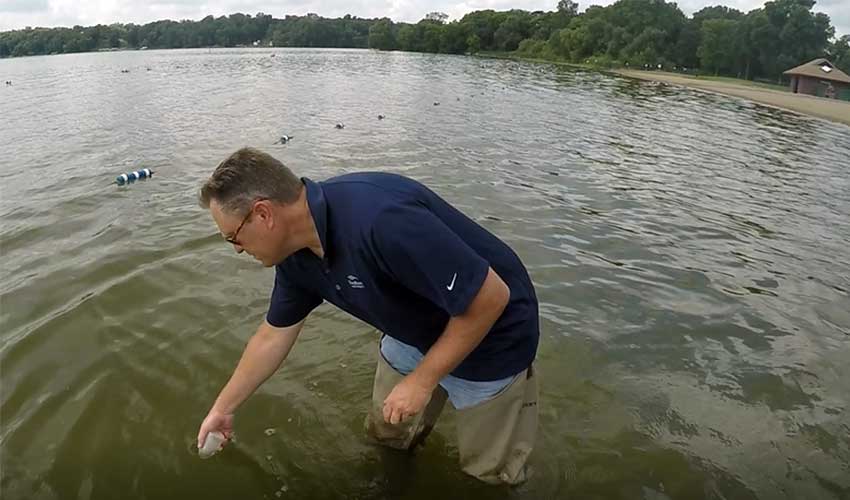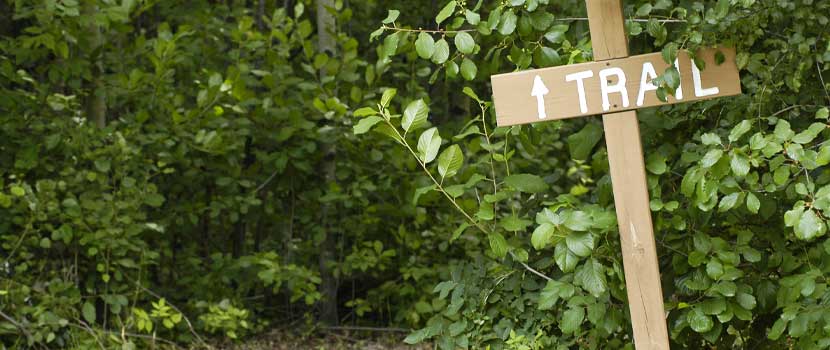
Splashing in the cool water of one of the 10,000 lakes is an essential part of a true Minnesota summer. However, there are times during the summer months that enjoying this popular pastime isn’t an option due to issues related to the water quality.
Typically, there are two reasons a beach will close:
1. E. coli levels are too high.
E. coli is used as a water quality indicator for swimming waters nationwide. At Three Rivers Park District, water quality crews monitor the water at beaches and swim ponds on a weekly basis from Memorial Day to Labor Day to ensure the E. coli levels are safe for users.
2. Reports of swimmer's itch.
The Park District is dependent on beach users to report swimmer's itch incidents since there are no tests for it. To report an occurrence of swimmer's itch, please contact the visitor center at the beach you visited.
What is E. coli and How Does it Get in the Water?
E. coli (Escherichia coli) is a single-celled bacteria with a variety of strains. While most strains are harmless, some can cause intestinal illnesses with flu-like symptoms. When a higher concentration of E. coli is detected, there is a greater likelihood that a dangerous strain is present.
E. coli can enter beach water through a variety of sources, including seagulls and geese, pets and other domestic animals, non-functioning lakeshore septic systems, overflow or breakage in sanitary sewer lines, lawn and street runoff, and from swimmers themselves.
How Do We Test for E. coli?

Beach water samples are tested weekly using the following process:
1. A nutrient packet specific for coliform bacteria and E. coli is added to the water sample.
2. The sample is poured into a tray with squares and incubated for 18 hours.
3. The tray is assessed. If the squares have turned yellow, it is considered positive for coliform bacteria. If the yellow squares glow under a fluorescent light (similar to a black light), E. coli is present.
4. The number of squares that turn yellow or glow are used to determine the most probable number (MPN) of bacteria. If the MPN is over 1260 E. coli colonies per 100 ml of sample, or if the 5-day average is over 126 colonies per 100 ml sample, the beach will be closed until levels are within state guidelines.


What is Swimmer's Itch?
Swimmer’s itch (cercarial dermatitis) is skin rash caused by an allergic reaction to a microscopic parasite released in the water by snails.
While a beach is closed due to swimmer’s itch, a treatment of copper sulfate is applied to the swimming area which kills the snails and the parasites. As mentioned earlier, there are no tests for swimmer’s itch and the Park District relies on beach users to report incidents of it.
One way to reduce your chances of contracting swimmer’s itch is to rinse off and/or towel off after exiting the water. Find more information about swimmer’s itch from the Minnesota Department of Natural Resources.
Keeping Bacteria Levels Down
Three Rivers Park District staff take measures to keep bacteria levels low by cleaning up goose droppings, raking the sand on the beach, attempting to keep geese away, and posting signs around the beach warning guests not to feed the ducks, geese, and seagulls.
The swim ponds at Lake Minnetonka Regional Park and Elm Creek Park Reserve are chlorinated to kill any bacteria, similar to a swimming pool, making it highly unlikely that the swim ponds will close due to high E. coli levels.
What You Can Do to Help
There are several things you can do to keep bacteria from entering the water when when at the beach:
- Properly dispose of your trash. Trash attracts birds and other animals.
- Do not feed ducks, geese, seagulls or other birds.
- Do not swim if you feel ill.
- Follow Park District policies and do not bring pets to the beach.
- Children who are not toilet trained should wear tight-fitting rubber or plastic pants when visiting a swimming area. Change diapers frequently and dispose of them properly.
Lower Your Risk of Illness from Bacteria
The following steps can help you limit your risk of becoming ill from bacteria:
- Wait 24 hours after a heavy rainfall to swim.
- Shower after swimming or entering the beach water.
- Don’t swallow beach water.
- Keep your face and head out of the water, or wear ear plugs and goggles.
- Do not swim if you are sick or if you have a weakened immune system.
Find more information about beach closures on the Three Rivers Beach Water Quality page or from Hennepin County Public Health.
About the Author
Amy has been with the Three Rivers Water Resources team since 2014. She graduated with a master's in water quality from the University of Wisconsin–Stevens Point. Prior to moving to Minnesota, she worked for the United States Geological Survey in North Dakota, where she developed a love for hunting birds. She trained her pup for hunting and enjoys getting out with her in the fall. She also enjoys gardening, building things and traveling.
Related Blog Posts
How to Protect Yourself and Prevent Ticks
By: Steven Hogg
Ticks are inevitable in nature, but they are a risk that can easily be prevented! Find ways to protect yourself from wood and deer ticks and learn more about the symptoms of tick-borne diseases.
The Wild Parsnip Problem
By: Paul Kortebein
Wild parsnip is an invasive species that can be a very real human health hazard. Learn how to identify wild parsnip and ways to prevent and slow its spread.
Reintroducing Wildlife at Three Rivers
By: John Moriarty
What do trumpeter swans, regal fritillary butterflies and bullsnakes have in common? All were reintroduced into Three Rivers parks. Read about what goes into reintroducing a species and discover what others were successfully reintroduced — some might surprise you!



